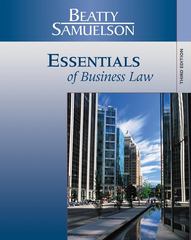

!Answer all questions.
4. Calculating GDP using national income account data
The following table shows data on consumption, investment, exports, imports, and government expenditures for the United States in 2010, as published by the Bureau of Economic Analysis. All figures are in billions of dollars.
Fill in the missing cells in the following table to calculate GDP.
Components
Consumption (C) $10,417.1
Investment (I) $1,818
Exports (X) $1,935.3
Imports (M) $2,435.5
Net exports of goods and services (NX)
Investment (G) $3,020.2
Gross domestic product (GDP)
This method of calculating GDP, which involves summing thevalue added at each stage of production , is called theexpenditure approach.
The integrated hazard for mortality for a group of lives over the period (0, ?), where r is measured in weeks, is being modelled by the function: H(t) =1- {1 + exp[(t -2)/3]}-1 (i) Find an expression for h(), the hazard function at time /. [2] (ii) Sketch a graph of h(t). [5] (iii) Suggest a context where a hazard function with this shape might be appropriate. [2] [Total 9]D Question 1 2 pts Consider the Birthday Abatement Exercise that we did in lecture, and assume that the whole economy is our class. Suppose that the government is going to auction off permits equal to half of total emissions in the economy (so half of all emissions must be abated), and that there will be a competitive market for permits sold on an exchange (i.e., in a market) with publicly posted prices so that it is very easy to buy or sell permits. Suppose now that a firm with a marginal abatement cost of $10 has a special opportunity to buy 100 permits at a price of $10 per permit. True or False: The firm is indifferent between buying the permits because they have the same constant marginal abatement cost. (2 points) True FalseD Question 2 2 pts Consider two policies. One is a carbon tax of $50 per ton, where the revenue is given back to consumers on an equal per capita basis. The second is a cap and trade program for carbon with an equilibrium price of $50 per ton in which permits are given to firms for free. True or False: These policies will yield the exact same outcome in terms of abatement, but different outcomes for consumer surplus and producer surplus (profits). (2 points) True FalseQuestion 3 2 pts Back in 1950, a town is worried about lead poisoning due to exposure of lead from paint, which is widely used in all buildings. The town council knows that lead exposure is harmful, but they are uncertain about the size of health effects from lead exposure. They are confident, however, that they know the marginal costs of abatement because they know how much it would cost to switch to lead-free paint for different buildings. Also, they know that the marginal costs of switching to lead-free paint is quite flat. True or False: If the town considered a price instrument (a tax on lead paint) versus a quantity instrument (tradable lead paint permits) these two alternatives should have the same deadweight loss. True False












